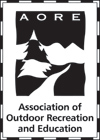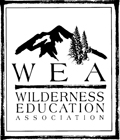Abstract
The need to better understand terrain in mountainous environments can lead directly to improved communication and management during outdoor recreation, education, and leadership experiences. Theories of risk and spatial cognition assist in explaining why terrain and exposure are inextricably connected. However, popular constructions of terrain in a wide variety of literature sources problematically conflate often unrelated determinations of climbing terrain difficulty and climbing exposure, a measure of both space beneath a climber and consequences of a fall. Explicitly separating these two constructs provides clearer and perhaps safer experiences during mountain travel, perhaps directly improving the professional practice in outdoor recreation, education, and leadership. More concrete definitions of terrain classifications and levels of exposure are proposed, in addition to suggested potential terrain management techniques.
Recommended Citation
Rose, J.
(2013).
Terrain classification, climbing Exposure, and technical management.
Journal of Outdoor Recreation, Education, and Leadership, 5(3), 242–257.
https://doi.org/10.7768/1948-5123.1176


